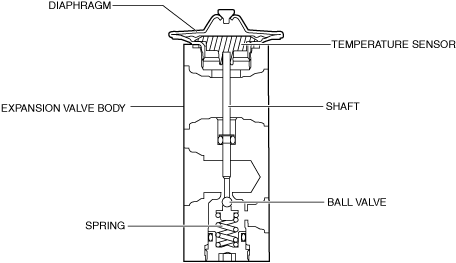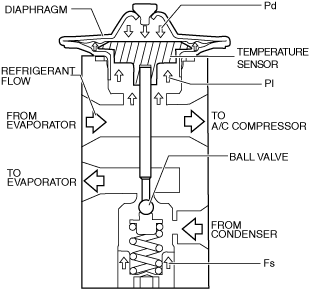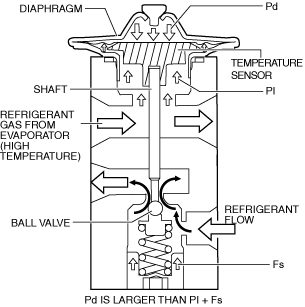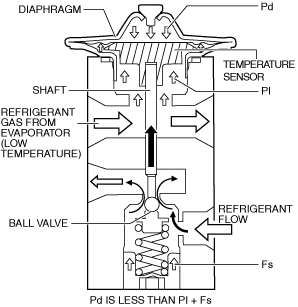EXPANSION VALVE
EXPANSION VALVE
SM2565457
id071100002000
Purpose
Function
Structure/Construction
-
― Diaphragm― Temperature sensor― Shaft― Expansion valve body― Ball valve― Spring
am3uun00002789
|
Operation
am3uun00002790
|
-
― Refrigerant pressure (Pd) in diaphragm― Refrigerant gas pressure (PI) of evaporator under diaphragm― Spring force (Fs) pushing up ball valve
am3uun00002791
|
-
1. The temperature of the temperature sensor tightly sealed against the diaphragm increases.2. The refrigerant in the diaphragm warms and the Pd increases.3. If this Pd increases more than PI + Fs, the diaphragm is pressed down.4. The shaft installed to the temperature sensor end presses down the ball valve.5. The amount of refrigerant is increased.
am3uun00002792
|
-
1. The temperature of the temperature sensor tightly sealed against the diaphragm decreases.2. The refrigerant temperature in the diaphragm decreases and the Pd decreases.3. The Pd decreases less than PI + Fs.4. The ball valve installed to the temperature sensor end is pressed up.5. The amount of refrigerant is decreased.



